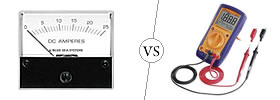Difference between Hangover and Withdrawal
Key Difference: Hangover is the effect that is experienced after heavy consumption of alcohol. This typically happens when the intoxication starts to wear off and is done being absorbed by the system. Withdrawal is symptoms that surface when a person that is addicted to alcohol or other substances abruptly stop taking the particular substance.
Drinking has become one of the favorite pastimes in today’s society. Almost every occasion requires a person to consume alcohol including happiness, sadness, excitement, sickness, etc. The morning after the party is often the hardest to deal with. This is known as a hangover. After continuous consumption of alcohol become addicted to the substance. Withdrawal from alcohol consumption has many similar symptoms to hangover and can confuse a person. Hangovers are pretty easy compared to the withdrawal.

Hangover is the effect that is experienced after heavy consumption of alcohol. This typically happens when the intoxication starts to wear off and is done being absorbed by the system. How does the alcohol affect the body and the brain? Well let’s see. The scientific name for withdrawal is veisalgia, derived from the Norwegian word ‘kveis’ meaning "uneasiness following debauchery" and Greek word ‘algia’ meaning “pain”. When a person consumes alcohol the alcohol gets into the bloodstream causing the brain to block the production of vasopressin, a chemical that allows the blood to reabsorb the water in body. Without the chemical, the kidney directly sends the water to the bladder. The constant urinating removes large amounts of salts and potassium from the body.
When the liver breaks down the alcohol, they covert the ethanol into acetaldehyde; this chemical is highly toxic and responsible for majority of the hangover symptoms. The acetaldehyde is then attacked by acetaldehyde dehydrogenase, an enzyme in the liver, and glutathione. If few drinks are consumed, the enzymes effectively attack the acetaldehyde; however, if the liver runs out of glutathione, acetaldehyde builds up in your body and maintains the intoxication. The alcohol touching the stomach lining as it is absorbed by the it, irritates the stomach cells causing nausea.
Hangover symptoms include: headache, nausea, sensitivity to light and noise, lethargy, dysphoria, diarrhea and thirst. In addition to physical symptoms, alcohol also creates psychological symptoms such as heightened feelings of depression and anxiety. There are many remedies stated that are expected to help hangover but many of these ‘remedies’ are not effective. Only few remedies are effective and some can also be used as a preventive measure prior to consuming alcohol.
 Now, withdrawal is symptoms that surface when a person that is addicted to alcohol or other substances abruptly stop taking the particular substance. In order to feel the symptoms of withdrawal, one must first become physically and mentally dependent on a addictive substances. Prolonged and heavy usage of one substance is sure to get the user addicted to it for a period of time. For example: continuous use of alcohol can cause the person’s body to start craving alcohol. Once the body gets used to the alcohol or the addictive substance and is then deprived of it, it causes to the body to react to the craving. Various different types of withdrawal includes alcohol withdrawal syndrome, caffeine withdrawal, cocaine withdrawal, nicotine withdrawal, cannabis withdrawal, etc.
Now, withdrawal is symptoms that surface when a person that is addicted to alcohol or other substances abruptly stop taking the particular substance. In order to feel the symptoms of withdrawal, one must first become physically and mentally dependent on a addictive substances. Prolonged and heavy usage of one substance is sure to get the user addicted to it for a period of time. For example: continuous use of alcohol can cause the person’s body to start craving alcohol. Once the body gets used to the alcohol or the addictive substance and is then deprived of it, it causes to the body to react to the craving. Various different types of withdrawal includes alcohol withdrawal syndrome, caffeine withdrawal, cocaine withdrawal, nicotine withdrawal, cannabis withdrawal, etc.
Sustained usage of a addictive causes the body to adapt to the presence of the drug in the system and lessen the drug’s effects over a period of time. The body builds tolerance to the drug in the system. When the drug is abruptly discontinued it causes the body to make some changes drastically causing the person to experiencing the symptoms in a few hours to a few days, depending on the drug. Depending the duration of the usage and the quantity, withdrawal can even become fatal for the user. Withdrawal also has psychological effects on the user. When a user continuously uses a drug, it creates a sense of euphoria in the brain, bringing the user pleasure. When the drug is discontinued, it creates an opposite effect, dysphoria as the nucleus accumbens activity declines below normal levels. This causes the person fall into a state of depression or sadness. Withdrawal activities differ depending on the user.
The symptoms of withdrawal vary depending on the substance that is used. Common symptoms include: Anxiety, restlessness, irritability, insomnia, headaches, poor concentration, depression, social isolation, sweating, racing heart, palpitations, muscle tension, tightness in the chest, difficulty breathing, tremor, nausea, vomiting, and/or diarrhea. Withdrawals can also lead to seizures, hallucinations, strokes and heart attacks. The best way is to wean from the substance slowly until the body can get used to living without the drug in the system.
Image Courtesy: allaboutyou.com, meth-treatment.org









Add new comment